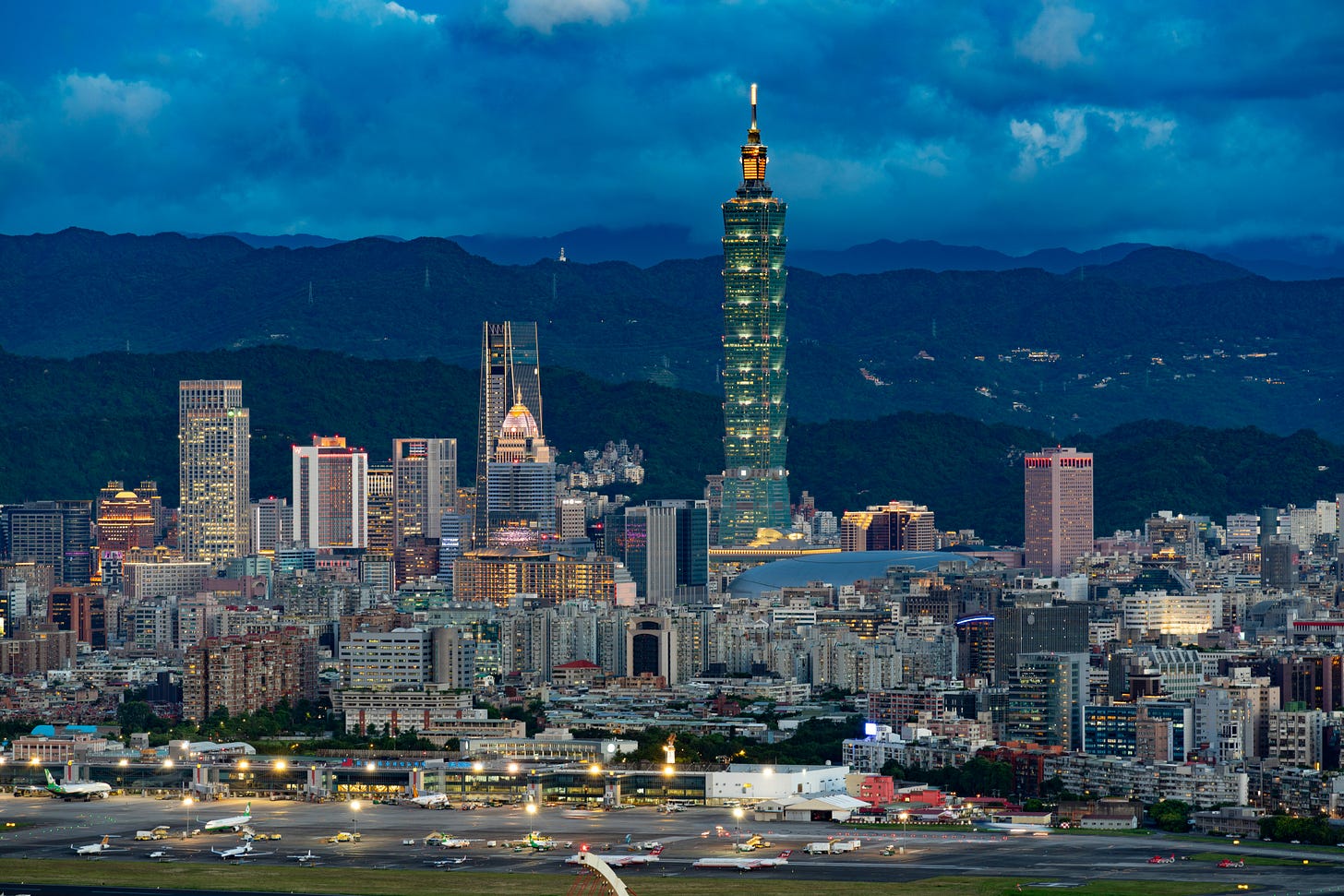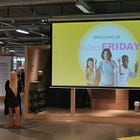
“The ground will keep shifting. What matters is not how still it stays, but how well we build to move with it.” — Nabeela Elsayed
One of the hardest days in my career came when IKEA announced it would be laying off 7,500 people worldwide. I was leading the retail and digital transformation office in Malmö at the time. It was a period of immense pressure, responsibility, and emotion.
In an unconventional but courageous move, IKEA’s global leadership team chose full transparency. Rather than dragging out the pain with announcement after announcement over a multi-year transformation, we opted to pull the bandage off in one sharp motion. People knew their jobs were at risk. There was no hiding from it. As we said back then: “Everything is going to change, almost.”
What helped me sleep at night was the knowledge that this transformation wasn’t a dead end. The jobs we were eliminating would be replaced, in part, by new roles shaped for a different kind of future. There was a visible path forward for the company and for many of the people. And perhaps more importantly, those affected would have a safety net, whether through IKEA’s transition support or government programs. There was loss, yes, but also some scaffolding to soften the fall, which doesn't often exist for most people facing job loss.
That was five years ago. Back when large-scale organizational transformations happened, maybe once a decade.
Today, they are perpetual.
The change never ends.
The layoffs feel endless.
And the ground beneath all of us just won’t hold still.
Whiplashed by Change
If you're a millennial like me, you’re on your 13th round of layoffs and reorganizations.
You survived the 2008 Great Recession, when job offers were rescinded and 2.1 million Americans were laid off. In the decade that followed, you moved back in with your parents and took anything you could get to make ends meet and pay for that $100K degree, which bought you little protection.
You managed, you kept yourself afloat, you started to make some progress, you got some experience, and you found a foothold in your chosen fields, only to get hit by the pandemic.
And I won’t rehash that one. We all lived it.
Then came the "great workplace reimagining," which was supposed to bring flexibility, humanity, and well-being. But instead, now in a post-pandemic world, we are experiencing a great retraction of what makes work cultures bearable.
Well-being is being de-prioritized, inclusion no longer matters, and CEOs are being emboldened to care less. No wonder there is a global decline in engagement. Productivity is slipping. People feel that they matter less, and most people are financially less well off. It’s not hard to understand why people are less happy and more stressed.
And just when it felt like it couldn’t get more volatile, generative AI walks into the room like a new character in a show already overloaded with plot twists.
This is the moment when I am telling people to keep your arms and legs inside the vehicle at all times, and I hope you took some Dramamine. Because the ride is only getting wilder.
The Stats That Should Stop Us in Our Tracks
In March 2025, layoffs in the US and globally surged again, making it the third-highest month of job cuts on record. According to the outplacement firm Challenger, Gray & Christmas, only April and May 2020 saw higher numbers, both triggered by the pandemic’s economic shock.
Yes, a large portion of the March layoffs came from U.S. government downsizing, led by the person who will go unnamed. But the ripple effects were immediate. The private sector took notice. Confidence sank. Hiring plans tightened. And companies plan to decrease hiring by 16%.
The new and foreseeable reality is a state of perpetual contraction-disruption-expansion-disruption. And few are prepared for it.
It is against this backdrop that I find myself navigating a very different kind of transition—not mine but my son’s. There is a point in parenting when the worry shifts from raising little kids to worrying about the future of your adult children. As someone who gives advice and counsel to both people and companies for a living, I also constantly ask myself how to counsel and advise my own kids as they prepare for the future.
How to Help the Next Generation Withstand the Earthquake
My son was just accepted into McGill University to study engineering. He’s passionate about architecture and city planning and like any proud mum, I’m thrilled. But I’m also anxious. Not for his abilities, which are strong, but for the world he’s stepping into. A world where career trajectories are less like ladders and more like an episode of American Ninja Warrior. Where job security is an illusion and the pace of change is like being on the world's oldest wooden roller coaster, where you're basically on the verge of constantly throwing up. Before my son decided he wanted to study architectural engineering, I didn’t know much about the field, and to help guide him, I did what I always do when I don’t know something - I study it.
So I’ve been reading and learning about the structures my son will one day help design, about how buildings are developed in places where the ground is, quite literally, unstable. I’ve become fascinated by how engineers approach the challenge of constructing stability in a world of unpredictability.
What struck me most wasn’t the strength of these buildings, but their flexibility. In places prone to earthquakes, skyscrapers aren’t built to resist movement; they’re built to move with it. Engineers design flexible foundations that can absorb shock. They install massive pendulums high in towers, called tuned mass dampers, that swing in opposition to tremors, counterbalancing the sway.
Buildings bend without breaking because they are built to flex, not to fight.
All of it made me wonder: why don’t we think about our work lives this way?
The education system is built for an age where someone could have a lifelong career in a single industry or domain, and that is no longer the case - it hasn't been the case for a long time. We are falsely told to build rigid plans and that careers follow a straight line. This is also not true; most people experience a multitude of turns, setbacks, and significant disruptions. We are conditioned to believe that our identities should be fixed to our job titles- also a trap because doing this is a formula for unhappiness and unfulfillment, especially when we sacrifice our health and relationships to pursue professional achievement.
The reality is that we are building our careers on tectonic plates surrounded by active volcanoes about to erupt. Layoffs, automation, and economic volatility are the tremors of our professional lives. And if we try to stand stiffly against them, we risk snapping under the pressure.
Just like buildings need foundations that absorb shock, people need support systems that can help cushion the impact when the ground shifts beneath them. That might mean strong communities, savings, mentors, or a deep well of emotional resilience. Just like skyscrapers rely on hidden dampers to steady their core, we need quiet rituals, writing, prayer, therapy and sleep to counterbalance the noise of our spinning worlds. And just like structures are designed to sway and shift, we must learn to adapt without seeing change as failure.
This is not a simple time to come of age, nor is it easy to lead, parent, or persist in a world that feels like a fault line. Every week brings another tremor, layoffs, AI disruptions, a retreat from workplace wellbeing or equality. We are told to be agile but asked to remain productive; to transform but never break stride.
Former Canadian Prime Minister Justin Trudeau once said, “The pace of change has never been this fast and it will never be this slow again.” That was back in 2018. Now, it feels like we’re all strapped into a high-speed cycle with no off-ramp, no reprieve. But if we can take anything from the world of architecture, it’s this: we can’t expect the ground to stay still. Instead, we must build our lives with the expectation that it won’t.
The Conversations I’m Having
Like my son, our children will inherit a world where the blueprint is constantly evolving. So we need to help them build a flexible foundation—the “base isolators” of their lives—that allows them to absorb shock. This could be a strong support network, financial planning, or emotional intelligence.
We need to teach them to think about their personal “mass dampers.” In a structure, tuned mass dampers are massive pendulums that sway opposite to the building’s motion, reducing oscillations during earthquakes. I think about this as the counterbalance to our work lives, encouraging us to identify and engage in activities that reduce stress and bring joy across the domains of our lives. Be it hobbies, exercise, or strengthening our faith, these are what help maintain our equilibrium during turbulent times.
We need to help the next generation build a “reinforced framework,” the cross-braces that allow them to withstand the blows of life. This means helping them see their work as something that will change and evolve. It means having them think about a Plan B and a Plan C, and understanding that none of it should feel like failure. We need to help them think about their lives as something designed to flex and sway—so they can absorb energy without compromising their structural integrity. This is the power of multiple intelligences: emotional, social, and spiritual.
These are the conversations I’m having with my son as I look at the few months ahead of me, which will likely be the last summer I’ve him under my roof. These are the skills I want to equip him with.
When we build a flexible foundation rooted in values, community, and a multidimensional identity and remove the blinders, letting go of the illusion of stability and security through work alone, we will all be more prepared.
We will have the capacity to keep standing upright, even when everything around us is shaking.
And that, more than any GPA or job title, might be the truest measure of success in the world to come.
As always, take care of yourself and the people around you.
Until next time.
In Partnership,
Nabeela
Want to learn more?
If you would like to learn more about the world's unhealthy relationship with work, success, and achievement and discover ways to escape the burnout loop, check out some of my other posts below:
Still There? Wow, I’m honored. Let’s keep it going:
Follow me on social where I spill more wisdom, drink lots of coffee and share all kinds of life lessons I am still learning.















Share this post